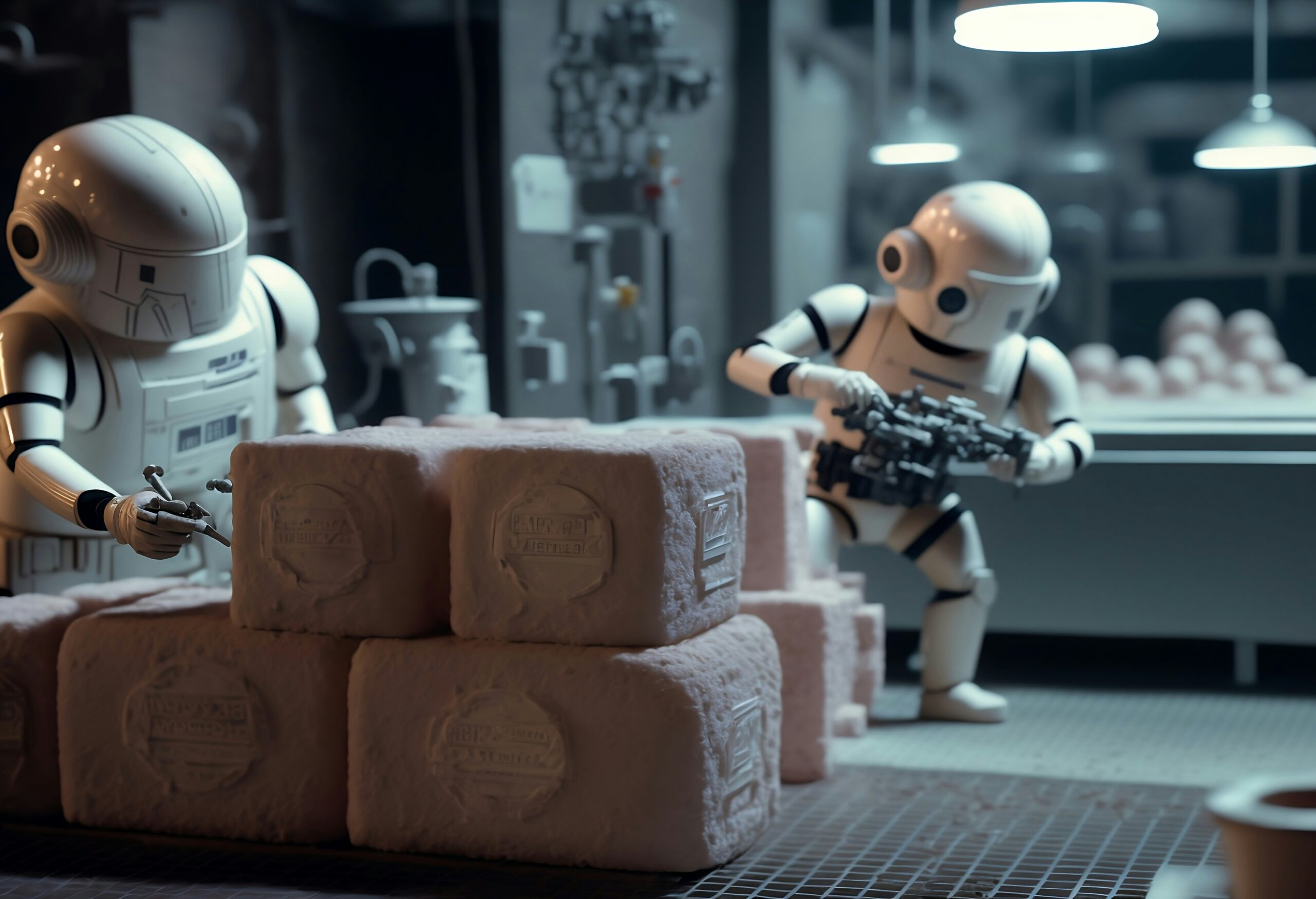
Packaging personalization is out of reach for most companies — it’s too expensive and time-consuming. However, artificial intelligence can make it more accessible. Numerous industries can use it to elevate their current offerings, affecting customer satisfaction, return rates and material waste. Could AI permanently impact consumer packaging?
How Can AI Personalize Consumer Packaging?
Businesses can use the text, graphics or images that generative models produce to make their packages more appealing to their target customers.
“Feeding an algorithm demographic-specific data like preferences and location can create user-centric labels, slogans or patterns. ”
An AI-powered simulation can provide decision-makers with critical design insights. This way, they can develop secondary packaging — outer material that serves as a marketing tool or offers additional product protection — to attract more buyers. They can use purchase and advertising data to accurately test colors, materials and graphics in a risk-free environment.
In addition to personalizing primary and secondary packaging, AI can also produce custom inserts like thank-you notes, stickers, product sleeves, or QR codes. This can enhance the container and individualize customers’ unboxing experiences.
While the most noticeable application of AI-driven personalization revolves around aesthetics, businesses can also use this technology to enhance protection. They can use data on returns, damage rates and negative reviews to find the best way to safeguard products in transit, improving customer satisfaction.
Decision-makers integrating AI with supply chain monitoring solutions could provide individualized, accurate shipping information for each package. This way, customers know their purchase’s precise location and condition at all times.
As of 2024, seven in 10 retailers have integrated AI into their omnichannel strategies — their offline and online touchpoints — for a more seamless experience. Packaging is a large part of creating consistency because it’s the one thing every customer interacts with.
Benefits of Using AI for Packaging Personalization
One of the most significant benefits of using AI-driven personalization in consumer packaging is the enhanced connection between disparate systems. Usually, lead designers determine how to incorporate market research into their creative process, letting it influence their concepts. While this approach is effective, it isn’t always precise.
AI substantially differs because it directly connects market research with the creative process — not a single data point is lost in translation or glossed over. A generative model uses logic to create designs that better encapsulate customer data.
Speed is another significant benefit. Many companies avoid personalization because it’s incredibly time-consuming. However, with AI, they can produce design concepts significantly faster than traditional methods, accelerating their time to completion.
AI’s automation capabilities speed up the entire packaging process, accelerating companies’ return on investment and resulting in significant cost savings. In an age where states’ minimum wages are rising and labor scarcity is increasingly common, autonomous technology can help brands preserve profits without raising prices.
“Waste reduction is another potential benefit. AI’s speed and cost benefits enable on-demand packaging, improving resource utilization and reducing excess material usage.”
Considering the world produces 400 million tons of plastic waste annually — and only recycles 10% — this measure would be as sustainable as it is cost-effective.
Examples of Ways Industries Could Use AI
AI-driven personalization can manifest in numerous ways depending on the industry.
Hospitality
Hospitality enterprises — cruise lines, hotels, airlines and resorts — often use to-go boxes, souvenir bags and room service cases. Since they deal with a large, constantly shifting customer base, waste reduction and brand recognition are ideal applications for AI. They can use this technology to accentuate their branding and minimize resource utilization.
Consumer Electronics
These companies face high return rates since products often arrive damaged or malfunctioning. According to one survey, 11% of respondents returned items in this category in 2024, making it one of the top five most-returned online purchases. Electronic components are vulnerable to shocks, drops and vibrations.
AI can tailor primary packaging to each product type without extending the time to completion or raising design costs, enabling consumer electronics firms to better protect their products in transit. This way, items won’t be damaged during shipping as often, lowering their return rates and increasing customer satisfaction.
Grocery
Grocery retailers can use AI to produce tailored ingredient lists or nutritional information panels for each product, driving sales. Alternatively, they can use generative AI and past purchase data to produce appealing labels and containers — like how oranges are often sold in red mesh bags to make them appear fresher and more appetizing.
Fashion
According to one conservative estimate, generative AI could add $150 billion to the fashion, apparel and luxury sectors’ operating profits from 2023 to 2028. Brand recognition will likely play a huge role in this span, so merchandising and marketing are critical. These businesses could use AI-driven personalization to enhance their packages’ branding.
AI-Driven Personalization Is the Future of Packaging
Packaging is more important than most people realize — every customer interacts with it and every product requires it. Companies can use the transformative power of AI to reimagine their current design concepts, enabling on-demand and hyper-personalized solutions. Someday, this approach may become the new standard.
Also Read 5 Steps to Implement AI-Powered Threat Detection in Your Business
- SEO Powered Content & PR Distribution. Get Amplified Today.
- PlatoData.Network Vertical Generative Ai. Empower Yourself. Access Here.
- PlatoAiStream. Web3 Intelligence. Knowledge Amplified. Access Here.
- PlatoESG. Carbon, CleanTech, Energy, Environment, Solar, Waste Management. Access Here.
- PlatoHealth. Biotech and Clinical Trials Intelligence. Access Here.
- Source: https://www.aiiottalk.com/ai-driven-personalization-the-future-of-consumer-packaging/
- :is
- :not
- :where
- $UP
- 10
- 2023
- 2024
- 2028
- 400
- a
- accelerating
- accessible
- According
- accurate
- accurately
- add
- addition
- Additional
- Advertising
- affecting
- age
- AI
- AI-powered
- Airlines
- algorithm
- All
- also
- always
- an
- and
- Annually
- Another
- Apparel
- appealing
- appear
- Application
- applications
- approach
- ARE
- around
- artificial
- artificial intelligence
- AS
- At
- attract
- Automation
- autonomous
- avoid
- bags
- base
- BE
- because
- become
- benefit
- benefits
- BEST
- Better
- between
- boxes
- brand
- Brand recognition
- branding
- brands
- businesses
- buyers
- CAN
- capabilities
- cases
- Category
- chain
- codes
- Common
- Companies
- completion
- components
- concepts
- condition
- connection
- connects
- conservative
- constantly
- consumer
- Container
- Containers
- Cost
- cost savings
- cost-effective
- Costs
- could
- create
- Creating
- Creative
- critical
- cruise
- Current
- custom
- customer
- customer data
- Customer satisfaction
- Customers
- damage
- data
- deal
- decision-makers
- Depending
- Design
- designers
- designs
- Detection
- Determine
- develop
- directly
- disparate
- driving
- Drops
- during
- each
- Effective
- Electronic
- Electronics
- ELEVATE
- enable
- enabling
- enhance
- enhanced
- enterprises
- Entire
- Environment
- estimate
- Every
- excess
- expensive
- experience
- Experiences
- extending
- Face
- Fashion
- faster
- Find
- firms
- five
- For
- from
- future
- generative
- Generative AI
- graphics
- Have
- help
- High
- hotels
- How
- How To
- However
- HTTPS
- huge
- ideal
- images
- Impact
- implement
- important
- improving
- in
- incorporate
- increasing
- increasingly
- incredibly
- industries
- industry
- influence
- information
- Inserts
- insights
- integrated
- Integrating
- Intelligence
- interacts
- into
- IT
- items
- jpg
- Know
- Labels
- labor
- large
- lead
- letting
- like
- likely
- lines
- Lists
- location
- logic
- lost
- Lowering
- Luxury
- make
- Making
- many
- Market
- market research
- Marketing
- material
- materials
- May..
- McKinsey
- measure
- merchandising
- mesh
- methods
- million
- minimize
- minimum
- model
- models
- monitoring
- more
- most
- negative
- New
- Notes
- numerous
- nutritional
- of
- Offerings
- Offers
- offline
- often
- omnichannel
- on
- On-Demand
- ONE
- online
- online purchases
- only
- operating
- or
- out
- over
- package
- packages
- packaging
- panels
- part
- past
- patterns
- People
- permanently
- personalization
- personalize
- plastic
- plato
- Plato Data Intelligence
- PlatoData
- Play
- Point
- potential
- power
- precise
- preferences
- Prices
- primary
- process
- produce
- Product
- Products
- profits
- protect
- protection
- provide
- purchase
- purchases
- qr-codes
- raising
- Rates
- reach
- Read
- realize
- recognition
- Red
- reducing
- reduction
- requires
- research
- Resorts
- resource
- respondents
- resulting
- retailers
- return
- returned
- returns
- Reviews
- revolves
- rising
- Role
- Room
- safeguard
- sales
- satisfaction
- Savings
- Scarcity
- seamless
- secondary
- serves
- service
- SHIFTING
- Shipping
- significant
- significantly
- simulation
- since
- single
- So
- sold
- Solutions
- someday
- span
- speed
- standard
- Steps
- stickers
- strategies
- substantially
- supply
- supply chain
- Survey
- sustainable
- Systems
- tailor
- tailored
- Target
- Technology
- test
- text
- than
- thank-you
- that
- The
- The Future
- the world
- their
- Them
- These
- they
- thing
- this
- threat
- time
- time-consuming
- times
- to
- too
- tool
- top
- traditional
- transformative
- transit
- Translation
- type
- Usage
- use
- user-centric
- uses
- using
- usually
- Vulnerable
- wages
- Waste
- Way..
- ways
- while
- will
- with
- without
- world
- would
- Your
- zephyrnet













